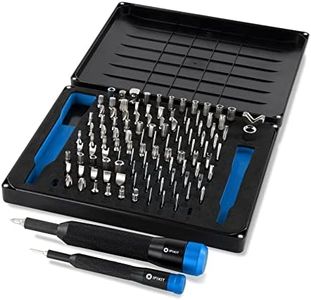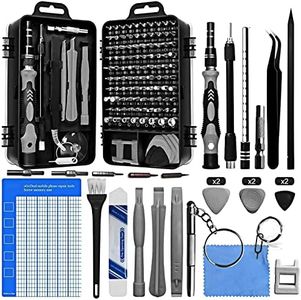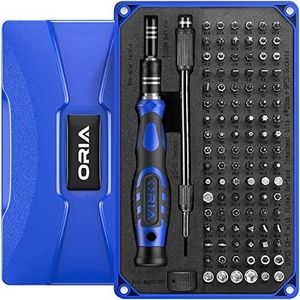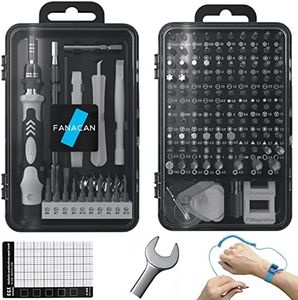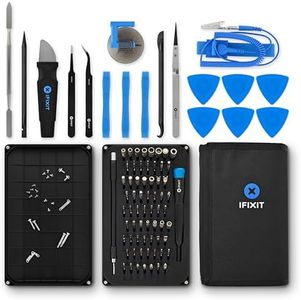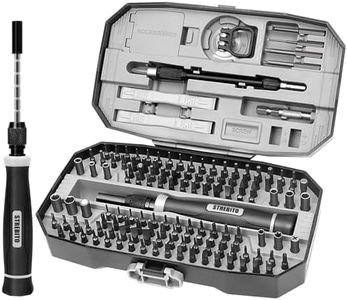We Use CookiesWe use cookies to enhance the security, performance,
functionality and for analytical and promotional activities. By continuing to browse this site you
are agreeing to our privacy policy
10 Best Computer Tool Kits
From leading brands and best sellers available on the web.Buying Guide for the Best Computer Tool Kits
Choosing the right computer tool kit is important if you plan on building, upgrading, or repairing computers. A good kit ensures that you have the right tools for the job, helps prevent damage to components, and makes working on your computer safer and easier. When picking a tool kit, it's key to look at what tools are included, the build quality, portability, and any safety-focused features. Think about the type of work you plan to do and how often you expect to use the kit; this will help you pinpoint which specs matter most for your needs.Tool VarietyTool variety refers to the number and types of tools included in the kit, such as screwdrivers, tweezers, spudgers, and sockets. This is important because different computer parts require different tools; for example, tiny Phillips or Torx screwdrivers are used for laptops, while larger or specialized bits might be needed for desktops or accessories. Kits can range from very basic—offering just a few common screwdrivers—to comprehensive sets with dozens of specialized tools. If you’re only planning simple upgrades, a basic variety may be enough. If you expect to tackle more complex repairs (like opening laptops or replacing smartphone screens), opt for a kit with a wider tool selection.
Build QualityBuild quality describes how well the tools are made, including durability and the materials used. Good build quality ensures that the tools don’t strip, break, or damage your computer’s screws and components. The quality can range from soft, low-grade plastics and metals that don’t last or fit well, to high-grade metals with non-slip handles. If you work on computers frequently or want the tools to last a long time, higher build quality is more important. For occasional, light use, mid-range quality may be sufficient.
Static Protection (ESD-Safe)Static protection, or ESD-safe features, means that the tools, wrist straps, or mats are designed to avoid damaging computer parts with static electricity. This is essential because computer components can be easily ruined by static discharge. Some tool kits include ESD wrist straps or anti-static tweezers, while basic kits may skip this entirely. If you are working on sensitive internal components often, prioritize ESD-safe kits. For simple tasks like swapping RAM or storage, you can be more relaxed, but some static protection is always safer.
PortabilityPortability refers to how easy it is to carry and store your tool kit, often determined by the size of the case and how organized the tools are inside. Some kits are compact and organized in a zippered pouch, making them easy to throw in a bag, while larger kits might be bulky but offer more tools. If you expect to repair computers on the go or want to store the kit neatly at home, a compact, well-organized pouch might be best. For a dedicated workspace where the kit can stay put, a larger kit could be fine.
Specialized Tools and AccessoriesSome tool kits include specialized items like suction cups for screens, magnetic mats, or pry tools for delicate disassembly. These tools are important if you plan to work on modern laptops, smartphones, or tablets, which often require more than just a screwdriver. If your work will involve more delicate or varied devices, choose a toolkit with such specialized accessories. For PC-only work that doesn't require prying or lifting glass panels, you might not need these extras.
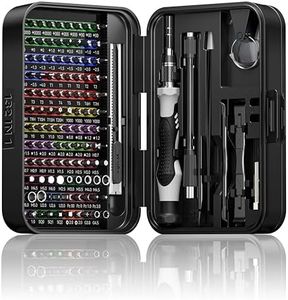
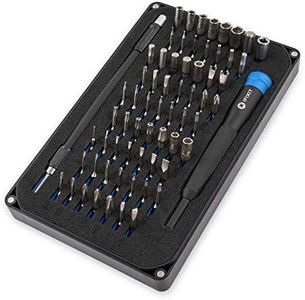
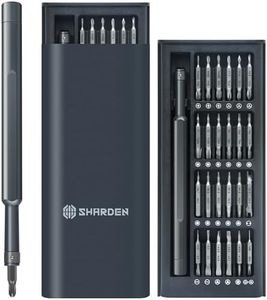

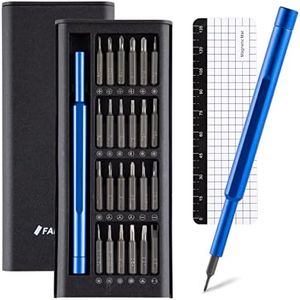
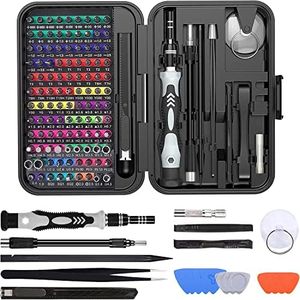
![AXTH 25-in-1 Small Precision Screwdriver Set, Professional Magnetic Mini Repair Tool Kit for Phone, Computer, Watch, Laptop, Macbook, Ring Doorbell, Eyeglass, Electronic, [Bearing Steel] Screw Driver](https://images-proxy.bestreviews.guide/1RJJfyG0rFpJDmokbvFHNeiaUKc=/0x300/https://m.media-amazon.com/images/I/41Gu3qrD6mL._AC_CX679_.jpg)

